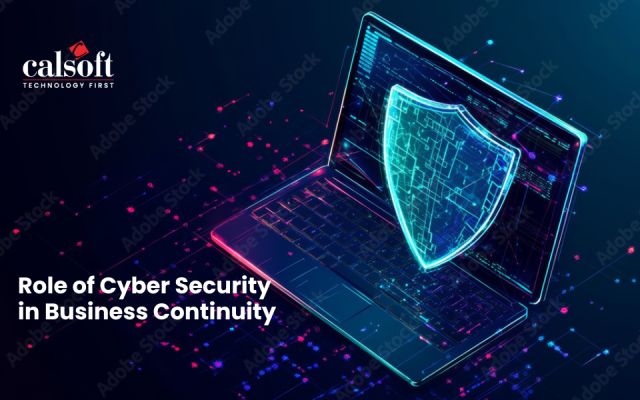Despite advances in security technologies, the risk organizations face from hackers and insider threats never seems to diminish. Technology innovations have made hackers far more sophisticated and destructive in their approach, allowing them to develop threat vectors that can surpass standard malware protection mechanisms and cause more damage than ever before. At the same time, as more and more devices get connected to the enterprise network – especially BYOD and IoT – there is a pressing need to establish robust security strategies.
Protecting endpoints has become a critical prerequisite
For hackers looking to breach enterprise defenses, endpoints provide among the easier access routes. With so many devices connecting to enterprise networks, identifying devices that lack the required level of security isn’t hard for the modern hacker. This is why it has become extremely critical for enterprises to ramp up their endpoint protection game. They must implement practices to arrest the deluge of data breaches that is impacting data security, causing irreparable losses, and damaging company reputations.
Endpoint protection measures offer a good level of threat intelligence. This helps organizations recognize (and resolve) modern-day threats. By monitoring every device in the enterprise network, endpoint protection solutions can minimize the frequency and scale of breaches and ensure the enterprise perimeter is safeguarded at all times.
Implementing endpoint protection is easier said than done
Despite the obvious value of endpoint protection solutions, several challenges make it extremely difficult for companies to block looming threats, protect their endpoints, and ensure the safety of users and data. Here’s a look at some of the top challenges:
- Poor security posture of legacy devices: For organizations in the financial or healthcare industries, legacy devices are an integral part of day-to-day functioning. Yet, these devices, with their poor security postures, pose a real challenge in endpoint protection. Since these systems and devices were designed for a previous generation of networks, they are often incapable of offering the level of security (or integration) needed in a dynamic and diverse ecosystem of endpoint devices.
- Growing number of endpoints: Unlike in traditional environments where endpoint devices were limited to desktops and laptops, today, business IT services are distributed across numerous public and private cloud, web, and on-premises environments. Add to it the widespread use of company-owned and BYOD smartphones, tablets, and wearables that users use to access business IT services from any location at any time. Staying a step ahead of hackers, who are constantly figuring out how to exploit this maze of interconnected and poorly secured devices, is not easy.
- Poor visibility of endpoints: The sheer number of devices connected to the network also poses a challenge for endpoint protection in terms of visibility. If cybersecurity teams do not know who has access to the network, what types of devices are connected, vulnerabilities, and more, it obscures the enterprise’s visibility across all endpoints as well as the ability to manage associated risks. When devices leave the network and re-enter after being exposed to viruses, malware, and other exploits, the difficulty in ensuring the endpoints are protected increases.
- Highly dispersed workforce: As organizations get increasingly global, a highly dispersed workforce also adds to the endpoint protection challenge. With employees working from central headquarters, onsite locations, as well as branch and home offices, the attack surface of endpoints expands even further—especially when they connect to the Internet using hotspots or public Wi-Fi networks. Although such ubiquitous connectivity makes working convenient, it also brings about substantial security risks. This is a factor that many enterprises are struggling to contain today in the wake of the COVID-19 driven Work From Home paradigm that has been uniformly forced upon the world.
- Complex network topologies: Enterprises that have been integrating new devices to an already complicated network architecture also find it difficult to derive value from their endpoint protection solutions. Given the complex network topology of many current security architectures, security professionals often lack the clarity and visibility needed to fix the existing loopholes. On the one hand, the security team finds it difficult to identify intrusions, and on the other, attackers take undue advantage of the opportunity presented by this complexity.
Endpoint protection best practices
Safeguarding the information stored locally in endpoint devices while protecting the enterprise network has become a key concern. Since every device is vulnerable to attack, adopting endpoint protection best practices is the only way to ensure security of personal and business data:
- Adopt a multi-layer and multifaceted approach to endpoint security, so you can continuously monitor endpoints for inappropriate activities and effectively control access to enterprise data and resources.
- Embrace intelligent technologies like analytics and AI to identify known and unknown security risks and take policy-based actions to minimize their frequency and influence.
- Implement appropriate identity and access management solutions as well as mobile device management solutions to enable a strong first line of defense.
- Restrict or limit authorized access to devices and provide endpoints exactly the level of access they require.
- Establish complete and updated visibility of your enterprise network, so you can monitor devices as they enter and leave the network.
- Leverage unified endpoint management capabilities to support all endpoints in the IT ecosystem for data collection, analysis, and reporting.
- Lastly, constantly update (or upgrade) your endpoints and have the latest patches implemented for added security.
As employees get increasingly mobile, using a growing range of devices to connect to the enterprise network, endpoint protection has taken center stage. This has become even more critical as working from home has become the new normal for corporates in the times of COVID-19. In this scenario, implementing a next-generation endpoint security solution to deal with cybersecurity threats is an important and urgent need!






